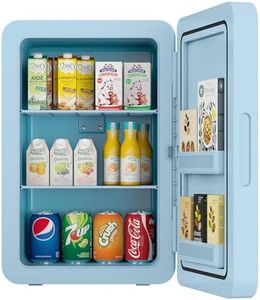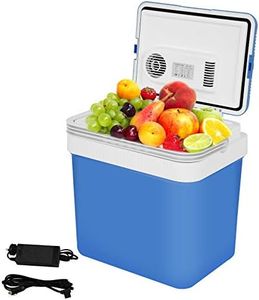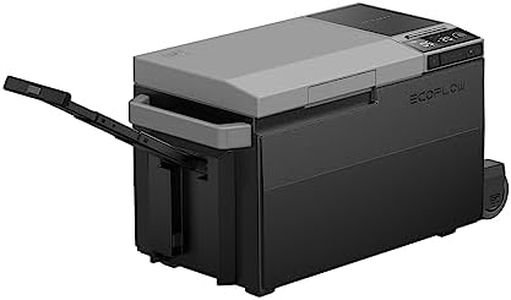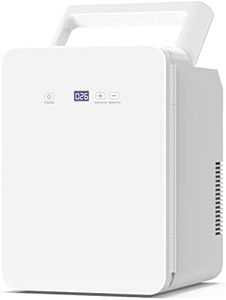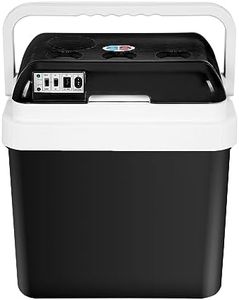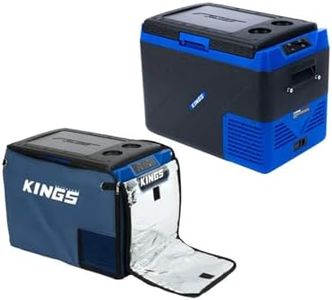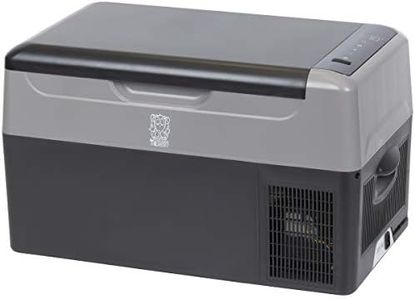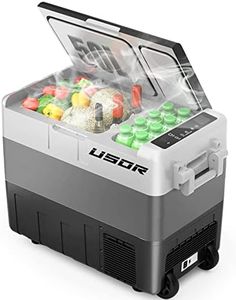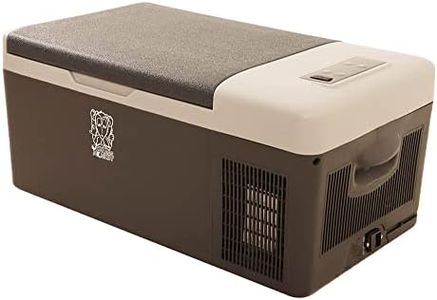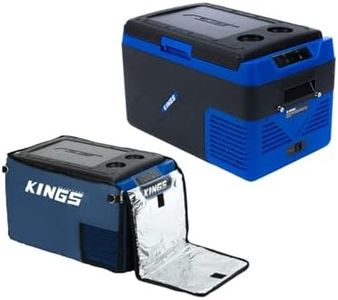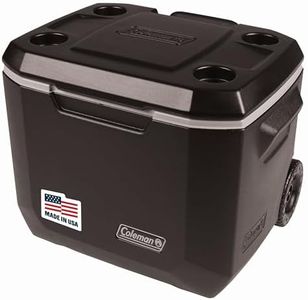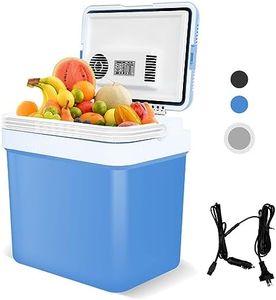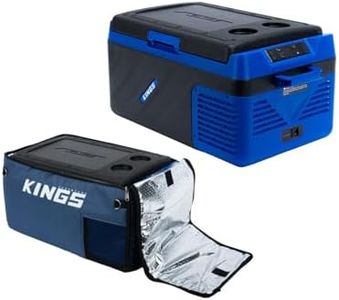We Use CookiesWe use cookies to enhance the security, performance,
functionality and for analytical and promotional activities. By continuing to browse this site you
are agreeing to our privacy policy
10 Best Portable Electric Coolers
From leading brands and best sellers available on the web.Buying Guide for the Best Portable Electric Coolers
Choosing the right portable electric cooler can make all the difference whether you’re headed for a road trip, camping, picnicking, or simply need a reliable way to keep food and drinks cool on the go. To find the best fit, it’s important to think about how and where you’ll be using the cooler, how much you’ll need to store, and what vehicle or power source you have. Consider the frequency of your trips and if you need to keep things cold for a few hours or several days. Understanding the main features and specifications will help you match a cooler to your lifestyle, ensuring convenience and satisfaction with your choice.CapacityCapacity refers to how much the cooler can hold, often measured in liters or quarts. This is important because it determines how many food items or drinks you can keep chilled at one time. Coolers are generally divided into small (under 20 liters), medium (20-40 liters), and large (over 40 liters). If you’re just packing lunches or snacks for a day trip or for one or two people, a small cooler is usually enough. For family outings or longer trips where you need to store more food and drinks, a medium or large cooler is better. Think about how many people you typically need to provide for and how much you want to bring—that’s the best way to pick the right size.
Cooling TechnologyPortable electric coolers use different cooling methods, most commonly thermoelectric and compressor types. Thermoelectric coolers use less energy and are lighter but can usually only cool to a certain temperature below the ambient air, so they may struggle in very hot weather. Compressor coolers work more like your home fridge and can handle higher temperatures, even making ice, but they tend to use more power and are heavier. If you need to keep things extra cold or will be in hot climates, consider a compressor cooler. For moderate needs and less extreme temperatures, thermoelectric is often sufficient.
Power Source CompatibilityMost portable electric coolers can plug into a car’s 12V DC outlet (the cigarette lighter socket), but some also offer 110V or 220V AC adapters for wall outlets, and a few are compatible with portable batteries or solar panels. This matters because you may want to use your cooler in different places: on the road, at a campsite, or at home. If you plan on using your cooler in multiple settings, check what power options are supported and make sure it comes with the adapters you’ll need. Choose a model that fits your travel style and use locations.
Energy ConsumptionEnergy consumption is how much electrical power the cooler uses, which can affect how long it runs without draining your car battery or, for campers, how much portable power you need. Coolers typically have their energy use rated in watts (W) or amps (A). Lower-powered coolers are good for shorter outings or when using limited power sources, but may not cool as quickly or efficiently. Higher-powered models can cool faster and reach lower temperatures but will need more energy. Match your choice based on expected trip duration and available power.
Temperature Range and ControlTemperature range and control determines how cold (or warm, for some models) the cooler can get and how precisely you can set it. Some coolers simply have on/off switches or a couple of settings, while others offer digital temperature control for setting exact temperatures. If you want to keep certain items at specific temperatures (like medicines or fresh foods), choose a cooler with adjustable and accurate temperature control. For less demanding uses, basic settings are easier and work just fine.
Insulation and Build QualityThe insulation and build quality of a cooler impacts how well it holds the cold and how durable it is for travel. Better insulation means the cooler can stay cold longer, even if unplugged temporarily. Look for thick, high-quality materials and sturdy construction, especially if you intend to use the cooler outdoors or on rough trips. If you’ll handle the cooler gently and use it mainly in your car, lighter and less rugged builds may be enough. Otherwise, prioritize robust design and strong seals.
Portability and Ease of UsePortability covers the size, weight, handle design, and overall ease of carrying your cooler. Wheels and telescoping handles can be helpful for larger, heavier models, while compact coolers with comfortable grips are better if you’re often moving it. Consider how far you’ll need to carry it, who will lift it, and if you need to fit it in tight spaces such as car trunks or tents. Choosing a model that fits your physical needs ensures you won’t be stuck with something hard to move or store.
Additional FeaturesExtra features include things like USB charging ports, interior lights, dual compartments (for cooling and freezing at the same time), removable dividers, or drain plugs for easy cleaning. These can make using the cooler much more convenient depending on your activities. Think about what features would make outings easier or more enjoyable for you, and prioritize those when selecting a cooler.
